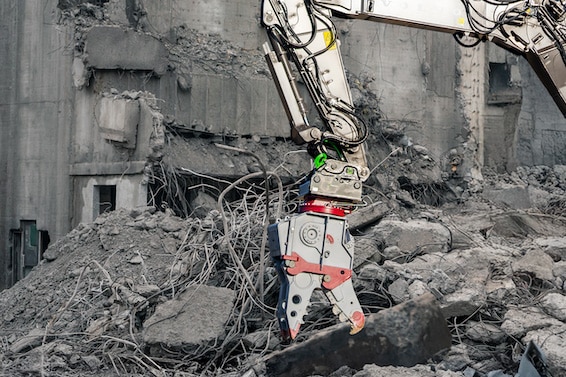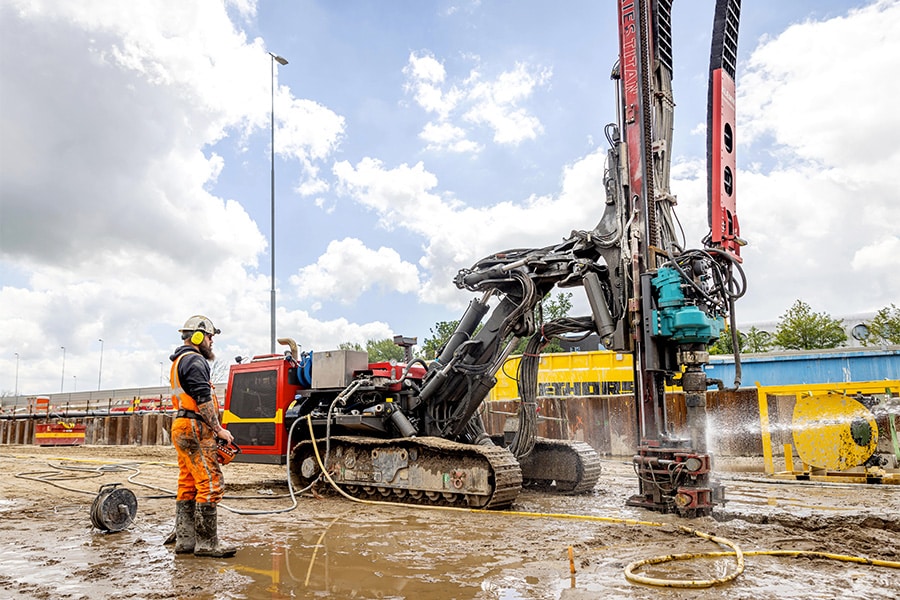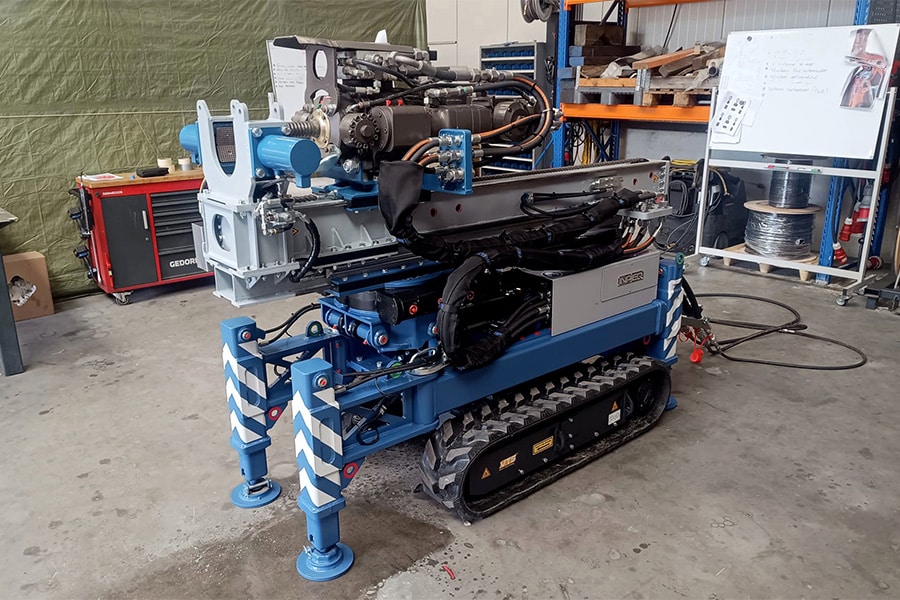
'Working with the store open' at the Entrance, in the heart of the city
The streetcar stops in front of Amsterdam's central station are the beating heart of intensive passenger transportation to and from the station. An infrastructural lifeline that should not be pinched off, but which does "get in the way" when it comes to carrying out work.
Wout Matze is Tram Infra Project Manager at Max Bögl & Partners and responsible for managing much-needed decommissioning. We talk to him about his work and the challenges involved.
Making room for the construction pit
"To begin with, the construction pit for the station is huge," Wout opens the conversation. "The streetcar tracks at the site of the construction pit had to be removed. To that end, we requested out-of-service repairs, or Temporary Out-of-Use Names (TBGNs) from the municipality's Metro and Tram Department. CFP then wrote replacement transportation plans with new routes. We need the space to work in, but must do so with as little disruption to passengers as possible. What are we talking about in total work? Two major intersections, two major streetcar yards in front of the station, two times four tracks, four stops on the west side and four stops on the east side. That shows the magnitude of the series of TBGNs."

Streetcar track along the Victoria hotel
The first TBGN was important for the start of the construction pit. Wout explains, "South of the construction pit, near the Victoria hotel, we laid a new streetcar track, in October 2019. We also renovated the complete intersection at Martelaarsgracht to connect the newly constructed line to it. That brought us the space to be able to place the sheet pile walls for the construction pit in the vacated place."
In the second TBGN, the intersection with Damrak was renovated. "This is the busiest intersection for pedestrians," continues Wout. "The complete streetcar infrastructure was renewed there. Subsequently, during the third TBGN, work was done in yard west, where four stop tracks were renewed. That was in the period from April 1 to September 1, 2020."

Connection tunnel to subway and distribution hall
The latter TBGN also includes the connecting tunnel, which runs from the construction pit to the subway and the distribution hall. "Through this tunnel, travelers will soon be able to walk dry from the underground bicycle parking to the subway and the NS hall, they will then re-enter the central station via the Cuyper stairs. Sheet pile walls have been placed in the metro link tunnel and the roof has been poured. On the roof a pre-load has been carried out, with large dump trucks. This prevents us from having to come back later, to make track corrections after settlements. We make sure that as many construction disciplines as possible come together during out-of-service periods, disciplines such as cables and pipes, road infrastructure, rail infrastructure, overhead lines, stops, asphalt work and underground objects. In this way, our work causes as little disruption as possible for everyone."
Current status: TBGN 4
The fourth decommissioning will begin in early May 2021. "This will last until October of this year. We will then renew yard east, the track between Dam Square and the east entrance, also the track on Prince Hendrikkade will be renewed. All cables, pipes, sewerage and gas lines will be addressed and the Kamper Bridge will be reinforced. The work also includes replacing all overhead wires, pylons, tension wires, streetcar tracks and switches. In the first TBGN, we had all switches delivered pre-built by pontoon, these were placed on the quay by crane, immediately in the right place, 'ready for grabbing'."

The final stage
Once work in the construction pit is complete, final pylons will still be placed around the construction pit. Is there life after project The Entrance? Wout says with a laugh, "Of course, but we will always look back on a unique project, not only in terms of location and work, but especially in terms of cooperation. We do this together and that makes us all proud of what is realized. We then as Max Bögl & Partners have provided renewal, improvement and better accessibility, especially also for the disabled. The work is fun and unique and the feeling of having been able to contribute is great. Together, we then delivered a fine piece of integral work."
Learn more: www.amsterdam.nl/deentree
The Entrance in a nutshell - what's happening?
Rough construction underground bicycle parking facility
Late last year, underwater concrete was poured into the construction pit: some 6,400 cubic meters in more than four days and nights. The concrete floor is almost a meter thick. With that, the building pit was closed all around and the water could get out. About 52 million liters of water were pumped out of the pit in phases. Then the structural phase could start. At a depth of 11 meters, the floor in 12 sections is now taking its first shape: making reinforcement, hammering formwork and then pouring concrete. The walls, columns and roof will follow later this year.
Lots of work going on at once in Station Square
On the east side, preparations are in full swing for the decommissioning later this year: renewing cables and pipes, laying new pavement in places where there will soon be walking routes around the work site, and installing new streetcar masts. Continuing along the east side of the square is the Kamper Bridge. The bridge is being reinforced and refurbished, the quay next to it had already been reinforced and is now also being nicely finished. On Station Square we are laying new pavement and at the same time work is taking place on the roof of the subway hall that lies just below the square.
It gets more and more beautiful on the Prince Hendrikkade
Last year, work began from the Damrak to replace cables and pipes and create the new layout. The work is going well. On the housing side, the service road is finished and the finishing touches are now being made to the new bike path and wider footpath up to the Kamperbrug. Meanwhile, work is also underway on the waterfront. Later this year the quay, streetcar track and carriageway will also be renewed here.



